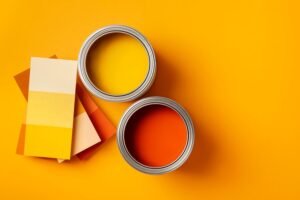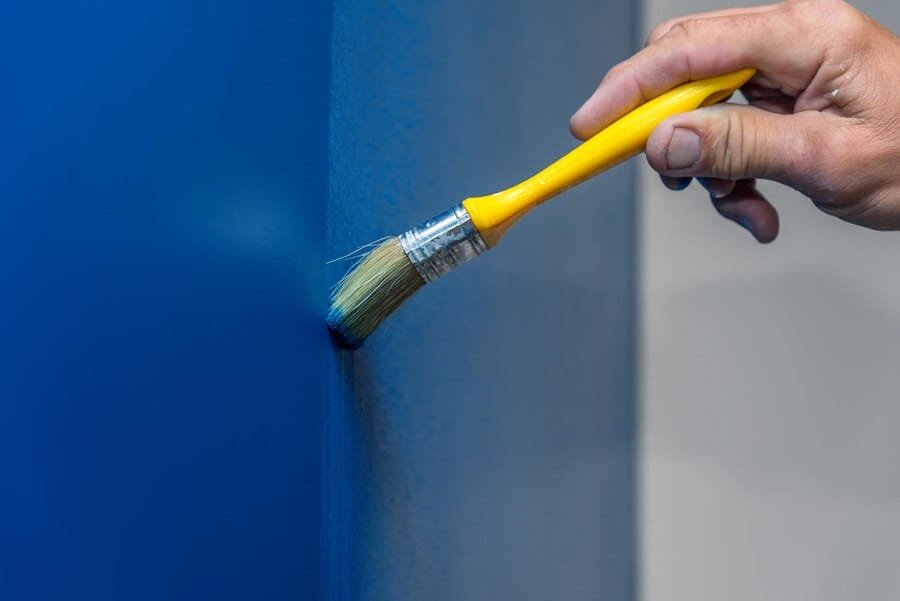Introduction to Long-Lasting Paint Finishes
Long-lasting paint finishes play a crucial role in various painting projects, whether for residential or commercial applications. The significance of achieving a durable and aesthetically appealing finish goes beyond mere surface beauty; it encompasses the longevity and resilience of the paint against environmental factors. A well-executed paint job can enhance the visual appeal of a space while also providing protection against wear and tear.
One primary benefit of opting for long-lasting paint finishes is their ability to withstand the rigors of daily life. Paint that is formulated for durability can resist common issues such as chipping, fading, and peeling. This means less frequent repainting, resulting in lower maintenance costs and less disruption over time. In addition, the longevity of the paint means that surfaces maintain their fresh and vibrant appearance for longer periods, which is particularly important in high-traffic areas.
Mithila paints, known for their rich colors and intricate designs, also merit attention in the context of long-lasting finishes. When correctly applied, these unique paints can offer an impressive level of durability. By choosing high-quality materials and employing proper application techniques, homeowners can ensure that their Mithila designs remain intact and vivid, reflecting the beauty of traditional artistry over the years.
Moreover, long-lasting finishes can contribute to improved property value. Homes and buildings that exhibit well-preserved exteriors are often more appealing to potential buyers. This appeal stems not only from the visual aspects but also from the perceived quality and care invested in the property. Therefore, understanding the importance of choosing durable paint options is essential for anyone looking to enhance both the beauty and practicality of their painted surfaces.

Understanding Different Types of Paints
When selecting paints for your projects, it is essential to understand the distinguishing features of the various types available in the market. The selection primarily falls into three categories: water-based paints, oil-based paints, and specialty paints, each possessing unique properties that can significantly impact the longevity and durability of the finish.
Water-based paints are widely acclaimed for their environmental friendliness and quick-drying characteristics. They are composed primarily of water as a solvent, making them easy to clean up with soap and water. These paints have less odor and emit fewer volatile organic compounds (VOCs), which is crucial in maintaining indoor air quality. The fast-drying nature of water-based paints also allows for quicker re-coating, reducing overall project time. However, while water-based paints provide excellent adhesion and flexibility, they may not offer the same level of sleekness or sheen as oil-based alternatives, making them less ideal for certain applications.
In contrast, oil-based paints utilize organic solvents, giving them a rich, glossy finish that is often preferred for high-quality applications. These paints are esteemed for their durability and resistance to wear and tear, making them a suitable choice for surfaces exposed to heavy use, such as trim work, cabinets, and doors. Nevertheless, oil-based paints require longer drying times and necessitate a more careful cleanup process, as they must be removed with solvents rather than water.
Specialty paints, on the other hand, cater to specific needs and applications. For instance, there are paints designed with unique properties, such as anti-mold, anti-graffiti, or high-heat resistance. Using these specialty paints can enhance the longevity of the finish significantly when applied to conditions that require added protection. Understanding the characteristics of these various paint types is vital in choosing the right solution for your project, ensuring that the final finish lasts as long as possible.
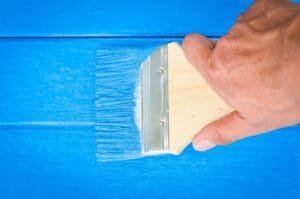
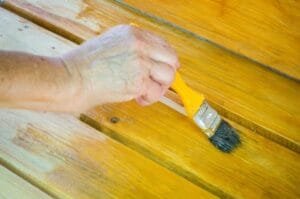
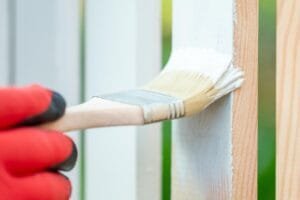
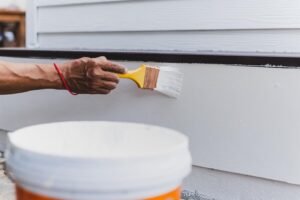
Surface Preparation: A Crucial Step
Surface preparation is an essential aspect of achieving a long-lasting paint finish, often overlooked by enthusiasts and professionals alike. The quality of the final result hinges significantly on the initial steps taken before applying the paint. Properly preparing the surface allows the paint to adhere more effectively, resulting in enhanced durability and a visually appealing finish.
To begin, cleaning the surface is paramount. Any dirt, grease, or old paint residues can hinder the adhesion of the new layer of mithila paints. For a thorough cleaning, use a mixture of warm water and mild detergent or a specialized surface cleaner. After scrubbing, it is critical to rinse the area with clean water and allow it to dry completely. This step ensures that no contaminants remain to interfere with the paint application, promoting a smooth eventual coat.
Sanding the surface is the next key step. Utilizing fine-grit sandpaper helps eliminate imperfections and creates a key for the new paint. It is imperative to sand any rough areas, previous paint layers, or glossy finishes adequately; this allows the mithila paints to grip the surface more effectively. Additionally, sanding enhances the overall smoothness of the painted surface, contributing to an even application and reducing drips or streaks.
Finally, priming is another critical phase of surface preparation, especially when working with porous materials or when changing colors dramatically. A quality primer acts as a foundation layer, sealing the surface and ensuring that the paint adheres well. Primers designed for specific surfaces can improve the performance of mithila paints, ultimately resulting in a more resilient and visually appealing finish.
Through diligent cleaning, sanding, and priming, individuals can establish the ideal groundwork for their painting projects. By focusing on surface preparation, the durability and aesthetic quality of the paint finish can be significantly enhanced, leading to successful and enduring results.
Choosing the Right Tools and Techniques
When it comes to achieving a long-lasting paint finish, the selection of appropriate tools alongside effective techniques is critical. The tools you choose can significantly impact the final result, so understanding their functions is essential. Brushes, rollers, and sprayers each serve different purposes and can yield varying outcomes when applying mithila paints or any other types of paint.
Brushes are ideal for cutting in and detailing work. They allow for precision, making them perfect for intricate designs typical of mithila art. When selecting a brush, opt for high-quality nylon or polyester bristles, as these materials retain paint well and provide a smooth application. Meanwhile, rollers cover large areas efficiently. The best choices for a long-lasting finish are rollers with a medium nap, suitable for most surfaces, as they facilitate even distribution of paint.
For larger-scale projects or for achieving a professional finish, consider using a paint sprayer. This tool can help minimize brush strokes and roller marks, providing a uniform coating. However, sprayers require a different technique and practice in application to avoid over-spraying or uneven coverage. Regardless of the tool chosen, proper preparation of the surface plays a pivotal role. Cleaning, sanding, and priming surfaces ensures better adhesion of the paint, prolonging its life.
Moreover, application techniques such as laying on thin, even coats should be emphasized. It is better to apply multiple thin layers than a single thick coat, as this strategy allows for better drying times and reduces the risk of drips or runs. Allow adequate drying time between each coat based on the manufacturer’s instructions. The integration of these tools and techniques will ensure that your mithila paints achieve a durable, beautiful finish that stands the test of time.
The Role of Environment in Paint Durability
When considering the longevity of any paint finish, including mithila paints, environmental factors play a crucial role. The conditions in which a paint is applied can significantly impact its durability and overall aesthetic appeal. Temperature, humidity, and sunlight exposure are three primary environmental elements that should be carefully evaluated before embarking on any painting project.
Temperature is vital in determining how paint adheres and dries. Most paints, including mithila paints, have specific temperature ranges within which they perform optimally. If applied in extremely cold or hot conditions, the paint may not cure properly, leading to issues such as cracking or peeling. Ideally, interior spaces should be maintained at a temperature between 50°F and 85°F (10°C and 30°C) during the painting process. For outdoor projects, a moderate temperature during application and drying is equally important to maximize durability.
Humidity is another critical factor affecting paint performance. High humidity levels can lead to prolonged drying times, causing the paint to attract dirt and grime, ultimately diminishing its appearance and longevity. Conversely, very low humidity can cause paint to dry too quickly, potentially resulting in an uneven finish. For most scenarios, it is advisable to aim for relative humidity levels between 30% and 50% for optimal paint application. Understanding local weather patterns can aid in planning your painting projects at the right time.
Lastly, sunlight exposure can result in fading and deterioration of paint finishes. Ultraviolet (UV) rays can break down paint molecules, leading to loss of color vibrancy and structural integrity. Choosing paints designed for UV resistance, such as specialized outdoor mithila paints, can further enhance longevity against harsh sunlight. Additionally, utilizing protective coatings can create a barrier against environmental stressors, solidifying the durability of paintwork.
Applying the Paint: Step-by-Step Process
To achieve a long-lasting finish with mithila paints, a systematic approach should be followed. Start by thoroughly preparing the surface where the paint will be applied. This step includes cleaning the area to remove dust, dirt, and any existing flaking paint. For porous surfaces, it may be beneficial to apply a primer, which enhances adhesion and ensures an even application. Select a high-quality mithila paint specifically designed for your surface type; whether it be wood, metal, or walls, the right formulation matters significantly.
Once the surface is prepped, gather your painting materials, including brushes, rollers, or sprayers, depending on your preference and the size of the project. Begin with the edges and corners using a brush, as this helps maintain precision before moving to larger areas. When using rollers or sprayers, ensure that you apply the paint in even strokes to avoid drips and runs. A common mistake when working with mithila paints is overloading the brush or roller; it is always better to apply multiple thin coats than one thick layer.
As you apply each coat, allow sufficient drying time as indicated on the paint can. Rushing this process can hinder the final appearance and durability of the paint finish. Once the first coat is dry, assess its coverage. Often, two coats are ideal for achieving a rich, vibrant result characteristic of mithila paints. After the final coat, give the painted surface time to cure fully, which can take several days. During this period, avoid touching or placing objects on the surface to ensure optimal adherence and finish durability.
This step-by-step approach not only enhances the application’s outcome but also ensures that the beautiful designs associated with mithila paints are well preserved and long-lasting.
Curing and Drying Times: What You Need to Know
The processes of curing and drying are critical components in achieving a long-lasting paint finish, particularly when dealing with traditional styles like mithila paints. Understanding these stages is essential for ensuring that the final appearance is not only aesthetically pleasing but also durable. While drying is the initial phase whereby the paint becomes touch-dry, curing refers to the chemical process that allows the paint to fully harden and develop its maximum strength over a specific period.
Mithila paints, known for their intricate designs and vibrant colors, require careful attention during both drying and curing times. The drying time can vary based on several factors, including the type of paint used, ambient temperature, and humidity levels. It is advisable to follow the manufacturer’s recommendations to ascertain the average drying time, as this can prevent issues such as smudging or lifting of the paint design. Generally, water-based mithila paints may dry faster compared to oil-based options, but the latter often has longer curing times.
While it may be tempting to place items on freshly painted surfaces or to clean them shortly after application, it is of paramount importance to allow adequate time for curing. This can typically range from several days to weeks, depending on the specific paint and environmental conditions. During this period, it is best to keep the painted area free from moisture and heavy traffic to avoid compromising the finishing quality. Furthermore, employing protective measures like using furniture pads or applying a soft cloth can safeguard the integrity of the painted design.
To summarize, proper understanding and management of curing and drying times are crucial for those working with different types of paints, including mithila paints. By allowing sufficient time for these processes, one can ensure a beautiful and enduring finish.
Maintenance Tips for Longevity
Maintaining the appearance and durability of surfaces painted with mithila paints is essential for ensuring a lasting finish. Regular maintenance can significantly extend the life of any painted surface, preserving both aesthetics and structural integrity. One of the best practices is to clean the painted area periodically. A simple solution of mild soap and water can effectively remove dirt and grime without damaging the paint. Use a soft cloth or sponge to apply the solution, ensuring that you do not scrub too hard, which could chip or scratch the finish.
Touch-up techniques are vital to address any minor damages that occur over time. Keeping a small supply of mithila paint in the original color used for the surface can help in conducting quick repairs. For best results, clean the damaged area first, then apply the touch-up paint with a fine brush, feathering the edges to blend it seamlessly with the surrounding area. This practice not only enhances aesthetics but also prevents moisture and other elements from penetrating the underlying surfaces, which could lead to further deterioration.
Environmental considerations also play a significant role in the maintenance of painted surfaces. It is advisable to avoid direct sunlight on painted exteriors as prolonged exposure can lead to fading and peeling. If possible, consider using shades, awnings, or strategically placed plants to provide some protection. Additionally, inspect regularly for signs of wear, such as cracks or bubbles, and address these issues promptly to prevent further damage. By implementing these maintenance tips, you can ensure that the beauty of mithila paints endures over the years, allowing you to enjoy a vibrant and eye-catching environment.
Conclusion: Investing in Quality for Lasting Beauty
Achieving a long-lasting paint finish requires careful consideration of various factors, including the choice of quality materials, surface preparation, and regular maintenance. The aesthetic appeal of spaces enhanced by paints is notably influenced by the selection of high-quality products, such as mithila paints, which not only exhibit vibrant colors but also offer excellent durability. Investing in premium paints enables homeowners to enjoy the beauty of their spaces for extended periods, ultimately yielding a more satisfying return on investment.
Surface preparation is another critical component in the painting process. Properly cleaning, sanding, and priming the surfaces before applying any paint ensures that the final coat adheres well and displays an even finish. Neglecting this step can lead to peeling, chipping, and various other issues that compromise the overall look and longevity of the paint job. By dedicating time to prepare surfaces adequately, the overall effectiveness of mithila paints or similar high-quality options is significantly enhanced.
Furthermore, ongoing maintenance plays an essential role in preserving the integrity of paint finishes. Regular cleaning and inspection for areas that may require touch-ups can help prolong the life of the paint. Whether utilizing mithila paints or other trusted brands, appropriate care can prevent premature deterioration and maintain the beauty of painted surfaces. By focusing on these aspects – selecting quality products, ensuring proper preparation, and committing to maintenance – homeowners can achieve results that truly reflect their investment of time and resources.
In conclusion, investing in quality materials and thorough preparation, coupled with consistent maintenance, is vital for attaining long-lasting paint finishes. Not only do these practices enhance the visual appeal of any space, but they also contribute to the overall satisfaction derived from well-executed painting projects.
